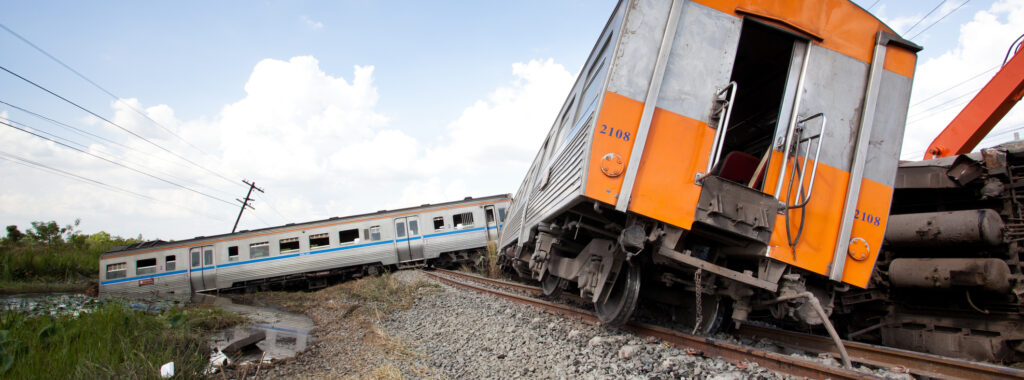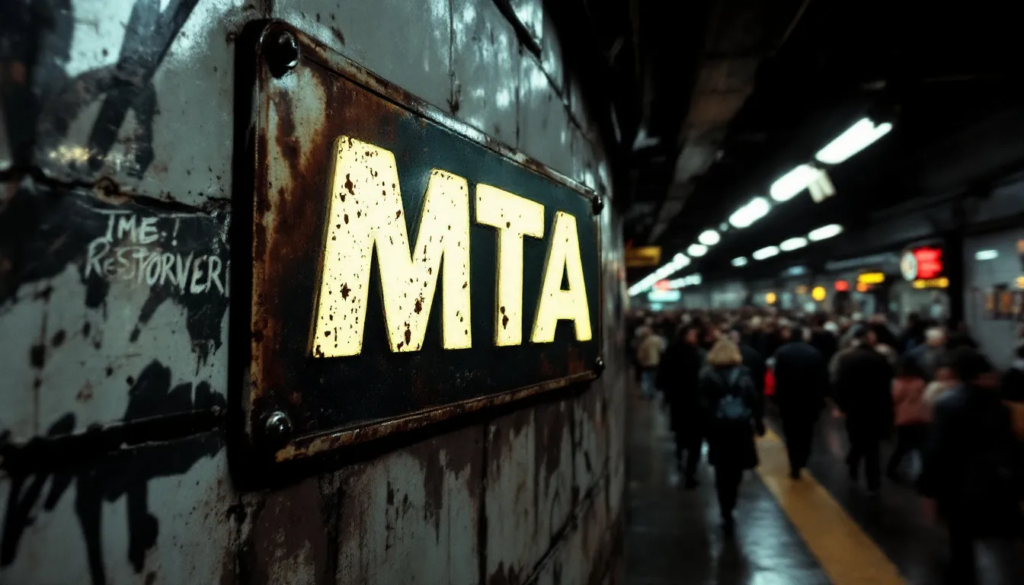
What to Do After a Train Crash NYC and Understanding Your Rights
In recent times, there has been an unsettling uptick in rail accidents throughout New York City. Last year began ominously on January 4, 2024, with a subway derailment that left at least 26 people injured. This was closely followed by another concerning incident where an unmanned train ran into the Briarwood Station on September 12, 2024, causing extensive damage after trespassers triggered its emergency brakes. Remarkably, this did not result in any injuries.
New York City History: Commuter Train Crashes
In New York City, during 2023 alone, there were reported to be a total of 241 subway-related incidents – representing almost a third more crashes compared to 2018. These figures emphasize increasing dangers for daily passengers and underscore the pressing need for enhanced safety strategies and measures within New York’s transit infrastructure.
These events serve as alarming wake-up calls about weaknesses within the transportation network of New York City. It remains imperative that those who rely on public transport stay informed regarding both causes behind such disruptions and actions they can employ for self-protection should they find themselves in similar situations in future commutes.
Common Causes of Train Crashes
Grasping the underlying reasons for train collisions is vital in averting them and enhancing emergency response. Human error plays a considerable role, with common mistakes including oversight of signals or exceeding speed limits resulting in severe incidents. These errors stem from the stressful conditions under which train operators function, where even brief lapses can lead to significant disasters.
The mechanical integrity of trains also significantly influences accident rates. Issues like brake malfunctions severely impact train safety and may cause local track derailments or crashes. Ensuring regular upkeep and comprehensive examinations by rail car inspectors is critical to minimize such risks. Accidents still happen occasionally due to missed problems or insufficient resources.
Overloading trains beyond their capacity can make them more prone to tipping off tracks, an issue especially pertinent for commercial trains carrying substantial cargo weight. Problems related to track infrastructure—such as alignment issues or blockages—also escalate these dangers. By focusing on these prevalent factors that contribute to mishaps, we can better deeper understanding how to prevent future tragedies and promoting safer railway transportation systems.
The Role of the Metropolitan Transportation Authority (MTA)

The MTA is responsible for maintaining the security and functionality of New York City’s transit system. It administers safety measures, conducts consistent training for its staff, and orchestrates emergency response plans. Such initiatives are essential to avert mishaps and deal with occurrences efficiently.
Promptly reporting hazardous situations is integral to the MTA’s approach to safeguarding passengers. The agency works in tandem with both local and national emergency teams to bolster overall safety amidst any incidents that arise. Through ongoing exercises and preparedness drills, the MTA equips its personnel with the necessary skills to effectively respond to emergencies, ensuring traveler protection.
Safety Procedures and Emergency Protocols
The foundation of a reliable transit network is built upon robust safety procedures and well-established emergency protocols. To ensure the reduction of mishaps and protect its passengers, New York City’s transit system has implemented detailed safety measures. These include the trial use of barriers at platform edges as well as advanced technologies for detecting obstructions on tracks.
Conforming to stringent federal guidelines regarding safety, the MTA conducts routine evaluations and upkeep on subway systems within New York City. Adherence to these standards guarantees both safe operation of trains and security for those traveling by subway.
In situations where emergencies arise, it is vital that passengers maintain their composure while heeding the advice provided by MTA personnel in order to stay secure.
Emergency Brakes and Safety Equipment
Subway trains incorporate an essential safety feature in the form of emergency brakes, which engage automatically during unexpected situations to halt the train and avert crashes. Ensuring that subway trains are outfitted with functional emergency brake valve cords and other safety apparatus is crucial for safeguarding both passengers and crew.
Cars within the subway system come equipped with various safety implements including emergency alarms, fire extinguishers, and first aid kits designed to manage emergencies effectively. The presence of these instruments plays a fundamental role in maintaining passenger security on board.
Radio Communication Procedures
Effective radio communication procedures are essential for MTA staff, as they play a pivotal role in coordinating quick responses and facilitating swift action in emergency situations. The ability to communicate clearly and promptly is vital for the efficient handling of events and steering of rescue operations, underscoring the critical nature of strong radio communication protocols.
Federal Requirements and Compliance
Safety guidelines established by the Federal Transit Administration (FTA) dictate how transit systems throughout the United States, such as New York City, manage their operations and maintenance. Adhering to these federal rules helps ensure that both passengers and employees are protected within public transportation networks.
As a component of adhering to these regulations, transit authorities are obligated to document any accidents or safety occurrences and report them to federal entities. Through evaluations and inspections, the FTA oversees adherence to its standards, with an aim of bolstering safety measures in transit organizations. This oversight aims at ameliorating operational practices and diminishing the likelihood of accidents occurring.
Immediate Steps to Take After a Train Crash
Following a train crash, prompt and decisive action is essential. Your response can greatly influence both your personal safety and the outcome of any legal proceedings that may follow. The priority lies in evaluating any injuries sustained and seeking urgent medical care. After addressing health concerns, it’s important to notify the relevant authorities to facilitate an organized emergency response.
Assessing Injuries
Amid the chaos triggered by a train crash, it’s essential to assess yourself and fellow passengers for any harm sustained. Injuries may not always be evident right away. Thus, obtaining medical help quickly is imperative. Neglecting even seemingly insignificant injuries could lead to more severe complications if they are not addressed promptly.
Passengers should aid one another in evaluating their physical state and guarantee that those with serious injuries or manifest signs of distress get urgent medical care. Carrying out this preliminary check ensures all involved obtain the required treatment and aids in recording the extent of injuries for subsequent claims.
Reporting the Incident
Following confirmation of your own safety, it is crucial to notify the emergency services immediately. Give precise information regarding the crash site and specifics, facilitating an efficient rescue operation that aids in promptly attending to every victim.
Documenting the Scene
It is crucial to meticulously record the crash site. Taking pictures from different perspectives and jotting down comprehensive observations offers critical proof for insurance claims and legal proceedings. Concentrate on capturing the damage, pertinent traffic signs or signals, and any other significant elements.
By systematically keeping these documents safe, you guarantee their availability when required. Such records will play a vital role in correctly remembering what happened and bolstering your position during conversations with officials or attorneys.
Understanding Your Rights After a Train Crash
Understanding your legal entitlements is crucial in the aftermath of a train crash. Identifying responsible parties for the accident, which can be complex and may implicate various entities, such as the conductor and the MTA, is key to establishing accountability.
Claims for compensation may encompass an array of damages: medical bills, lost earnings due to inability to work, emotional distress, property damage, or claims related to fatalities. Securing a lawyer with expertise in this field ensures comprehensive consideration of these factors.
Why You Might Need a Lawyer
Dealing with the legal intricacies that come after a train crash or train derailment can be overwhelming, which is why obtaining legal support is crucial. The procedures tied to train accident cases are filled with complex details and require expertise that might be difficult to navigate without expert guidance.
Securing the services of an attorney is vital in making sure you obtain just compensation for any injuries or damages sustained. An attorney will lead you through every step of the legal journey, from collecting proof to negotiating settlements with insurers, safeguarding your entitlements and striving for the most favorable resolution possible.
Contact NYC Train Accident Lawyer Nicholas E. Tzaneteas
Nicholas E. Tzaneteas, train car accident attorney, has helped victims injured and their families as a result of an accident involving a crash, derailed train car, disabled train, or train collision as passengers in a vehicle. Attorney Tzaneteas serves residents throughout New York City, Bronx, Brooklyn, Queens, and Manhattan, Bronx, Queens, Staten Island, and Manhattan.
Call (718) 704-5519 for a free consultation to review your case.
Frequently Asked Questions
What should I do immediately after a train crash?
Right after a train crash occurs, it’s vital to evaluate any injuries you may have sustained, notify the relevant authorities about the accident, and capture evidence of the scene through photographs and detailed notes.
These actions are essential not only for ensuring your own safety, but also for facilitating any future inquiries into the incident.
Why is it important to report a train crash to authorities?
Reporting a train crash to the authorities is essential for orchestrating a coordinated emergency response and efficiently managing rescue operations. Swift communication helps protect lives and avoid additional accidents.
What are my rights after a train crash in New York City?
If you suffer injuries and damages from a train crash, it’s crucial to establish liability in order to pursue the compensation you’re entitled to.
How can a lawyer help after a train crash?
A lawyer is essential after a train crash, as they can navigate legal complexities, gather critical evidence, and advocate for fair compensation for your injuries and damages.

